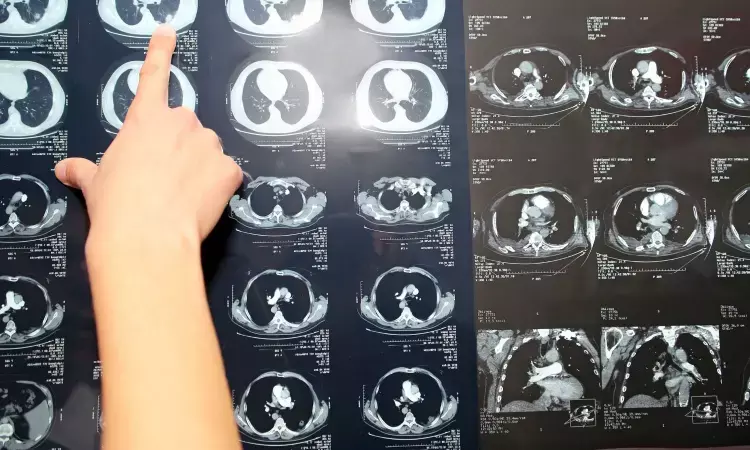- Home
- Medical news & Guidelines
- Anesthesiology
- Cardiology and CTVS
- Critical Care
- Dentistry
- Dermatology
- Diabetes and Endocrinology
- ENT
- Gastroenterology
- Medicine
- Nephrology
- Neurology
- Obstretics-Gynaecology
- Oncology
- Ophthalmology
- Orthopaedics
- Pediatrics-Neonatology
- Psychiatry
- Pulmonology
- Radiology
- Surgery
- Urology
- Laboratory Medicine
- Diet
- Nursing
- Paramedical
- Physiotherapy
- Health news
- Fact Check
- Bone Health Fact Check
- Brain Health Fact Check
- Cancer Related Fact Check
- Child Care Fact Check
- Dental and oral health fact check
- Diabetes and metabolic health fact check
- Diet and Nutrition Fact Check
- Eye and ENT Care Fact Check
- Fitness fact check
- Gut health fact check
- Heart health fact check
- Kidney health fact check
- Medical education fact check
- Men's health fact check
- Respiratory fact check
- Skin and hair care fact check
- Vaccine and Immunization fact check
- Women's health fact check
- AYUSH
- State News
- Andaman and Nicobar Islands
- Andhra Pradesh
- Arunachal Pradesh
- Assam
- Bihar
- Chandigarh
- Chattisgarh
- Dadra and Nagar Haveli
- Daman and Diu
- Delhi
- Goa
- Gujarat
- Haryana
- Himachal Pradesh
- Jammu & Kashmir
- Jharkhand
- Karnataka
- Kerala
- Ladakh
- Lakshadweep
- Madhya Pradesh
- Maharashtra
- Manipur
- Meghalaya
- Mizoram
- Nagaland
- Odisha
- Puducherry
- Punjab
- Rajasthan
- Sikkim
- Tamil Nadu
- Telangana
- Tripura
- Uttar Pradesh
- Uttrakhand
- West Bengal
- Medical Education
- Industry
FlowTriever System benefits pulmonary embolism patients both clinically and functionally

FlowTriever System benefits pulmonary embolism patients both clinically and functionally. A study published in JSCAI: The official journal of the Society for Cardiovascular Angiography and Interventions, has concluded that among pulmonary embolism (PE) patients, 6-month all-cause mortality, chronic thromboembolic pulmonary hypertension, and chronic thromboembolic disease were low following thrombectomy with the FlowTriever system.
According to researchers, at six months intervals, there was an improvement in right ventricular or RV function, patient symptoms, capacity or exercise, and quality of life (QoL). Researchers reported that rapid thrombus extraction is associated with preventing long-term sequelae in pulmonary embolism patients.
PE, a clinically challenging disease, has both short- and long-term morbidity and mortality. The catheter-based therapeutic options for managing PE have evolved in the past decade. Studies have reported acute safety and effectiveness with FlowTriever System (Inari Medical). This acutely reduced pulmonary artery pressure (PAP), improved RV function, and increased cardiac output during the index hospitalization. There needs to be more certainty of data on the longer-term benefits of large-bore mechanical thrombectomy.
The FlowTriever All-Comer Registry for Patient Safety and Hemodynamics (FLASH) is a single-arm study for evaluating the safety and effectiveness of the FlowTriever System among a large and geographically diverse population with acute PE.
This report focuses on the longer-term outcomes, including late all-cause mortality, RV remodelling, residual symptoms, functional status, and PE-specific QoL through a 6-month follow-up after treatment with the FlowTriever System.
The study results could be summarised as follows:
- Seven hundred ninety-nine patients were enrolled.
- The study was completed by 75% of patients with a mean follow-up of 204 ± 46 days.
- Demographic characteristics were 54.1% men, a mean age of 61.2 years, 77.1% intermediate-high-risk PE, and 8.0% high-risk PE.
- At study completion, All-cause mortality was 4.6%.
- There was an increase in patients' proportion with normal echocardiographic RV function from 15.1% (baseline) to 95.1% (6 months).
- At six months, the MMRCD score improved from 3.0 (baseline) to 0.0.
- There was an increase in 6-minute walk test distances from 180 m at 48 hours to 398 m at six months.
- Median PE QoL total scores at 30 days and six months were 9.38 and 4.85, respectively.
- The Prevalence of site-reported chronic thromboembolic pulmonary hypertension and chronic thromboembolic disease was 1.0 % and 1.9%, respectively.
They explained saying Mechanical thrombectomy provides rapid hemodynamic improvements following PE, but there is uncertainty on long-term benefits. We reported All-cause mortality as 4.6% and infrequent long-term pulmonary embolism sequelae. There was an improvement, clinically and functionally, at six months intervals.
In the study, a researcher reported low 6-month all-cause mortality, chronic thromboembolic pulmonary hypertension, and chronic thromboembolic disease after thrombectomy with the FlowTriever system.
Further reading:
https://www.jscai.org/article/S2772-9303(23)00443-X/fulltext#%20
BDS, MDS in Periodontics and Implantology
Dr. Aditi Yadav is a BDS, MDS in Periodontics and Implantology. She has a clinical experience of 5 years as a laser dental surgeon. She also has a Diploma in clinical research and pharmacovigilance and is a Certified data scientist. She is currently working as a content developer in e-health services. Dr. Yadav has a keen interest in Medical Journalism and is actively involved in Medical Research writing.
Dr Kamal Kant Kohli-MBBS, DTCD- a chest specialist with more than 30 years of practice and a flair for writing clinical articles, Dr Kamal Kant Kohli joined Medical Dialogues as a Chief Editor of Medical News. Besides writing articles, as an editor, he proofreads and verifies all the medical content published on Medical Dialogues including those coming from journals, studies,medical conferences,guidelines etc. Email: drkohli@medicaldialogues.in. Contact no. 011-43720751


